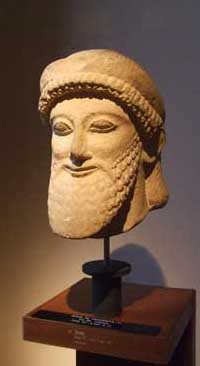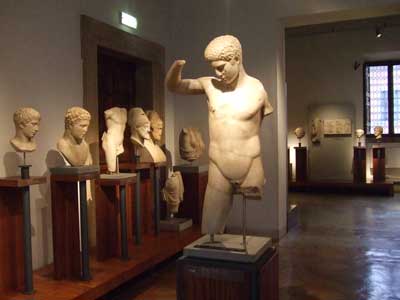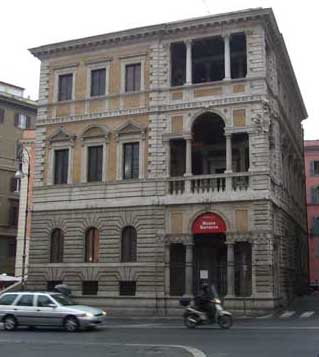The Museo Barracco is a great little museum with a fine collection of ancient sculptures, located in the heart of Rome but not much visited by tourists.
For years this building stood closed and there was little sign that it would ever open. But recently it did re-open its doors, and it is now a little-known but great culture-stop in central Rome. Baron Giovanni Barracco was a wealthy aristocrat who collected antiquities from dealers and from nineteenth-century excavations. He donated his collection of sculptures to the City of Rome in 1904, and it is now housed in a pretty little palazzo in the middle of the Centro Storico, between Piazza Navona and Campo de’ Fiori. The building has a small courtyard, and the exhibition takes up the first and second floors; just a few rooms in total.

When I explored the museum on a winter’s day I was the only visitor. It meant a peaceful wander, but it did seem a shame that such a good collection should be so overlooked. There are lots of fine museums in Rome, and altogether too much to see, but this one is a manageable size (you only need allow half an hour) and fits perfectly into a walking tour of the historic centre. The collection isn’t vast, but the exhibits are all of good quality and cover various periods. They are almost exclusively archaeological finds from the ancient world, although there is also a 12th-century religious mosaic from the first St. Peter’s.
The museum has some fine Egyptian works including funerary stele, an extremely ancient wooden lion’s head, a small granite sphinx and some interesting works dating to the Greco-Roman period in Egypt, such as the mummy mask of a plump lady with fancy ringlets. There are works from Assyria, including reliefs from Nimrud and Ninevah, an interesting collection of pieces from Cyprus and a few examples of Etruscan art. In the Greek rooms, a row of original Greek marble sculptures, mostly heads and busts, faces a collection of Roman-era copies. Among the Greek pieces is a lovely head of Apollo copied from a work by Pheidias, and a head of Athena with a helmet and eyeliner. Later Hellenistic pieces include a dog licking its wounds and an Alexander-the-Great-type head. In the final room are more Roman pieces including a wall-painting of a hermaphrodite and a marble head of a boy from the Imperial Julio-Claudian family who may be the future Emperor Nero.
Palazzo Farnesina ai Baullari
The building which houses the museum is a Renaissance palace built for French diplomat and prelate Thomas Le Roy in the early sixteenth century. He was authorised to use the lily of France as a heraldic emblem, and this features in the building’s decor. The lily is also the emblem of the Farnese family, and along with its proximity to Palazzo Farnese, this led to the building becoming known as the Farnesina, with ‘ai Baullari’ (the neighbourhood name) added to distinguish it from the other, more famous, Villa Farnesina by the Tiber. The building is said to have been designed by Antonio da Sangallo. The building passed through the hands of various families who altered or embellished the appearance, until it came into the possession of the City of Rome at the time when this area was being redeveloped at the end of the nineteenth century. A facade was added on the new Corso Vittorio, and during the work a late Roman dwelling was discovered beneath. In 1948 the Barracco collection was moved here, having been homeless since its original purpose-built museum was demolished ten years previously.
The museum is attractively laid-out and well-lit. There are very brief descriptive labels for each item, although there is a little written information available about the collection. Audio-guides are available.

Practicalities
The museum is open Tuesday – Sunday from 9am until 7pm. It’s closed on Mondays and also some public holidays. It is one of Rome’s Musei in Comune, civic museums, and allows free admission to the over-65s and under-18s from the EU (and other countries with reciprocal agreements). A full-price ticket is 3 euros. The highlights of the collection can be viewed on the official museum website (see links panel on the right).
The Museo Barracco’s address is Corso Vittorio Emanuele 166/A; it is close to Piazza Navona and a lot of bus routes run past.
On this site
External links
